The use of the hook of a single-beam crane mainly involves the correct operation, installation, maintenance and safety precautions of the hook. The hook is an important part of the crane, used to hang and lift objects to ensure the smooth progress of the lifting work. The following are detailed methods and precautions for the use of the hook of a single-beam crane:
Before using the hook of a single-beam crane, you need to ensure that the hook has been correctly installed and is in good working condition.
Pre-installation inspection: Check whether the hook has cracks, wear or deformation. Make sure that the hook has no obvious damage or defects, and whether the hook’s lifting lugs, pins and other parts are firm.
Correct installation: The installation of the hook should meet the technical requirements of the crane, and the hook should be firmly connected to the crane’s slings, wire ropes and other accessories. Make sure that the hook can rotate freely during crane operation to avoid obstructing the lifting of objects.
Wire rope installation: The wire rope should be correctly passed through the pulley groove of the hook, and ensure that the end of the wire rope is securely fixed.
When using the hook of a single-beam crane, the operator needs to follow strict operating procedures to ensure safety and work efficiency.
Hook-mounted objects: When lifting objects, ensure that the object is completely hung on the load-bearing part of the hook, ensure that the center of gravity of the object is directly below the hook, and avoid the hook and the object from being skewed.
Adjust the hook position: If the hook is not aligned with the object, the hook should be placed accurately above the object by adjusting the lateral and longitudinal operations of the crane.
Avoid objects from slipping: When hanging objects, use appropriate slings (such as slings, chains, etc.) and ensure that the objects are stable. Do not hang the objects directly on the opening of the hook. When using slings, ensure that the strength of the slings is suitable for the weight of the object.
Lifting operations: During the lifting operation, avoid sudden lifting or rapid movement to avoid safety accidents caused by inertia of the hook and the object.
Avoid overloading: During operation, ensure that the load does not exceed the rated load of the crane and the maximum load capacity of the hook. Use overload limiters, load meters and other equipment for monitoring to prevent the hook from being damaged due to overloading.
Avoid collision between the hook and other objects: During the lifting process, ensure that the hook is kept at a sufficient distance from other facilities or objects to prevent the hook from colliding.
Avoid eccentric loading: When hanging objects, ensure that the force is evenly applied to avoid excessive force on one side causing the hook to tilt or damage.
Do not use the hook when it swings violently: When operating the crane, avoid violent swinging or vibration of the hook, which may cause the object to be unstable or even cause the hook to fall off.
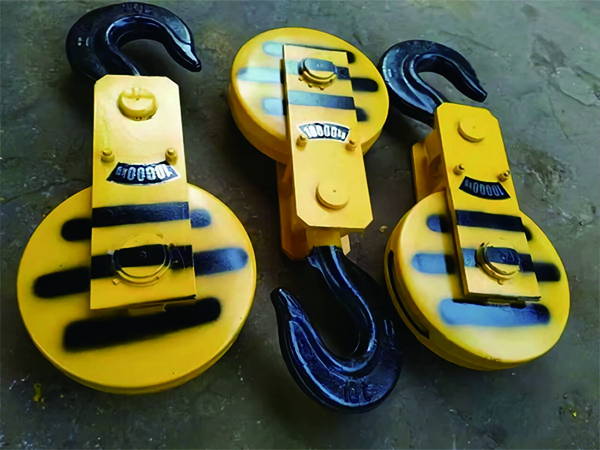
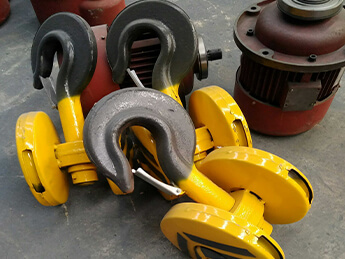
The hook is an important load-bearing component in the crane, so regular inspection and maintenance are essential.
Daily inspection: Before each use, check whether the hook has defects such as cracks, deformation, and wear. Check whether there is enough clearance in the opening part of the hook to ensure that the wire rope, sling, etc. can pass smoothly.
Lubrication and maintenance: Regularly lubricate the moving parts of the hook (such as pins, pulleys, etc.) to reduce friction and wear and extend the service life of the hook.
Regular inspection: Regularly conduct professional inspections on the hook. If necessary, ultrasonic flaw detection or magnetic particle flaw detection and other inspection methods can be used to ensure that there are no hidden dangers in the internal structure of the hook.
Replace damaged hooks: If the hook is found to be seriously damaged (such as cracks, deformation, etc.), it should be stopped immediately and replaced to ensure safety.
When using hooks, operators must strictly abide by safety operating procedures to ensure personal and equipment safety.
Operator training: All operators should receive professional training and master the basic knowledge and operating skills of hook use.
Wearing safety equipment: Operators should wear necessary personal protective equipment, such as safety helmets, protective shoes, etc. when working.
Verify the load before operation: Make sure the weight of the object does not exceed the maximum load capacity of the hook. Check whether the load is stable before lifting to avoid falling objects.
Avoid impact loads: Avoid impact loads during lifting, moving, and lowering to prevent damage to the hook and wire rope due to instantaneous overload.
Safety protection: Avoid contact between the hook and the operator or other staff, and set up a cordon in the work area to ensure a safe working environment.
Hook wear or deformation: If the hook is severely worn or deformed, the machine should be stopped immediately for inspection to assess whether it needs to be replaced. Minor wear can be restored by grinding.
Hook loosening: If the pin or connection part of the hook mounting part is loose, it should be stopped immediately and re-tightened.
Hook damage: If the hook is severely damaged such as cracks or breaks, it should be stopped immediately and repaired or replaced.
When using the hook of a single-beam crane, correct installation, operation and maintenance are the basis for ensuring safe operation. The main function of the hook is to carry and lift objects, so it is necessary to ensure that the hook is in good working condition and avoid overload, impact load and improper operation. Through regular inspection and maintenance, the service life of the hook can be extended, the occurrence of failures can be reduced, and the safety and efficiency of crane operations can be ensured.
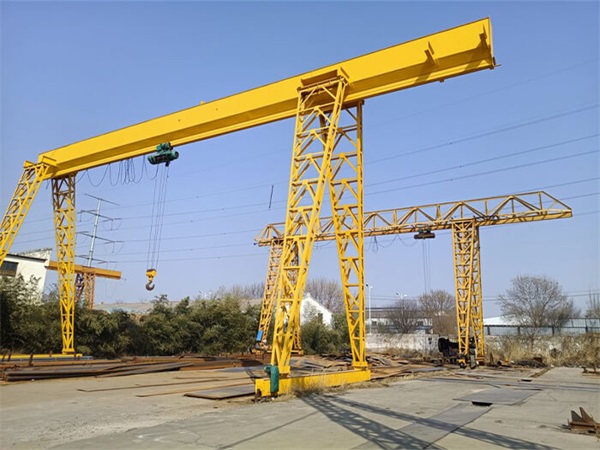
MH type electric hoist gantry crane is used together with CD MD model electric hoists.
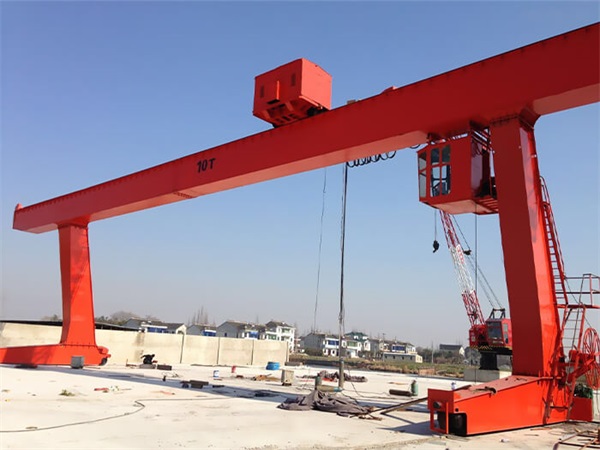
L Type electric hoist gantry crane match with CD1/ MD1, HC type Electric Wire rope hoist, to lifting and transporting the heavy materials, mainly use indoors and outdoors.
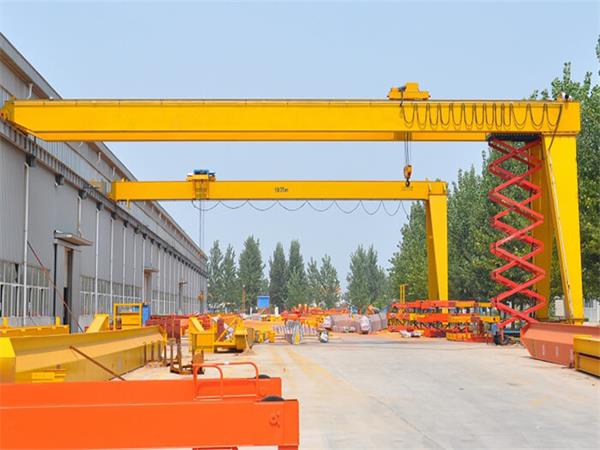
BMH Type Semi Gantry Crane is a bridge-type crane whose bridge is supported on the ground track through outriggers on both sides.

A-type Double Beam Hook Gantry Crane, It is mainly composed of a gantry (main beam, outriggers, lower beam, etc.), a lifting mechanism, a running mechanism and an electronic control part.
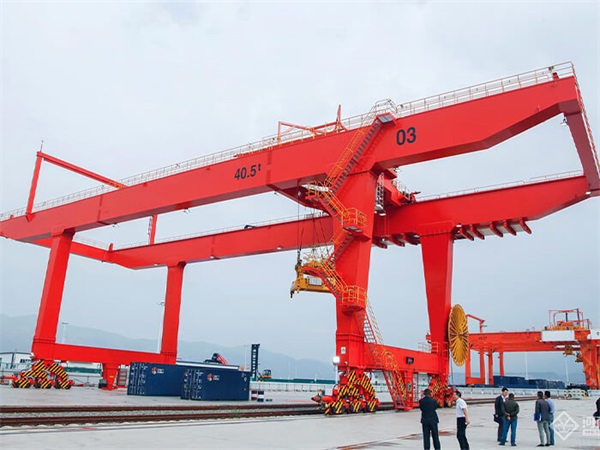
The rail-mounted container gantry crane (English abbreviation RMG) is one of the special machines for container yards.
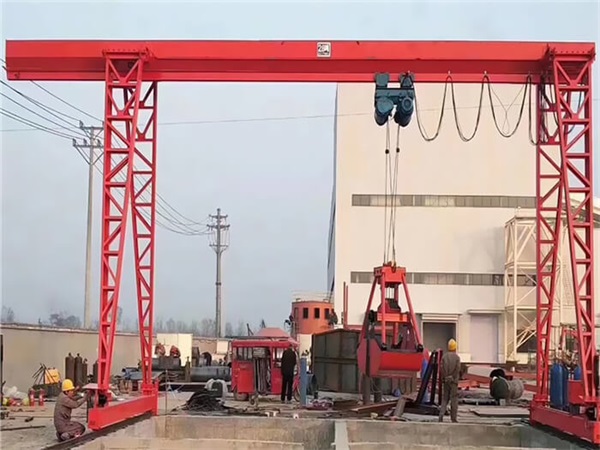
MZ Type Double-beam Grab Gantry Crane are mainly used in conjunction with bridge cranes, port cranes, and winches. They are widely used in ports, power plants, docks, chemical industries, etc. to grab various types of loose accumulations, such as ore, coal, slag, etc.
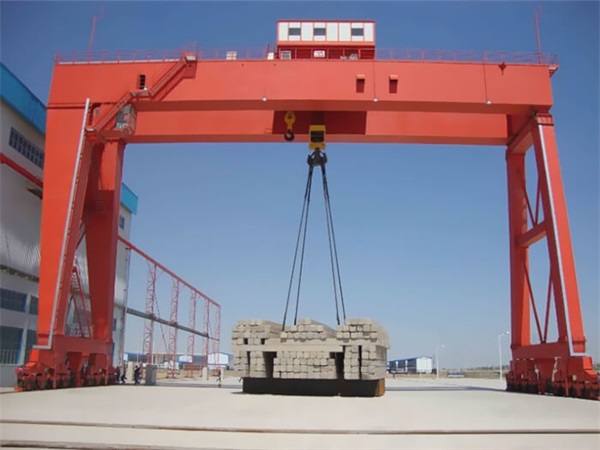
Winch Gantry Crane are used in open warehouses, windy areas, material stocks area, bridge building, concrete industry, cement plant, granite industry, construction industry, engineering industry, port, transportation, construction, dockyard, and other building sites for lifting and loading unloading objects.
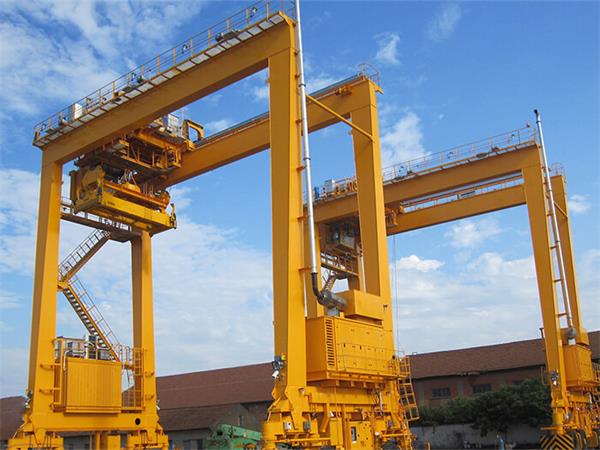
U Type Subway Turn Slag Hook Gantry Crane also known as subway slag flipping machine, slag flipping gantry crane, slag flipping gantry crane, etc., is a specialized gantry crane used for excavation in subway and tunnel construction projects.
We design cranes that meet your needs. Whether you need to increase safety, maximize production capacity or reliability, or reduce costs, we deliver.